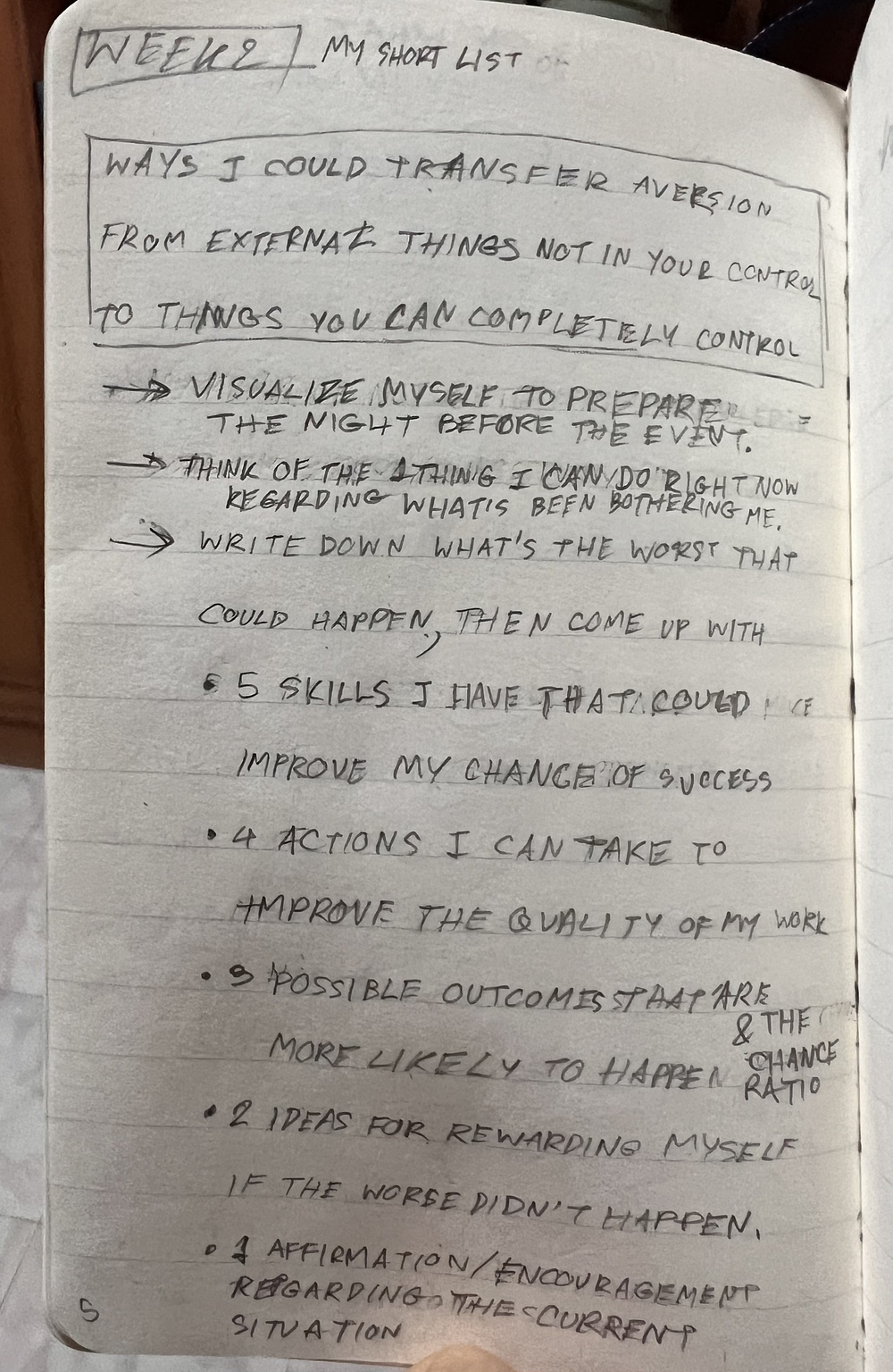📝 My Stoic Journal: Week 2 Focus on What Is Completely in Your Control
This week, the exercise focuses on the concept of aversion, which can be seen as a type of desire, as in the desire to avoid misfortune. People have very different reactions to similar misfortunes, and the reason is that some people are better at redirecting the aversion away from things that they dislike but are not in our power, and transferring it to things that we can completely control.
The true challenge is taking actions on something we can be guaranteed to achieve, instead of desiring something that is outside our control.
What is in your power, and what you then should desire, is putting forward the best possible case for the desired outcome based on your best effort to do your job well. If you do the best job you can at every moment, you've already succeeded… in your own right.
Even in situations where complete control is absent, you still
possess the ability to influence the final outcome. There's always a
pathway to enhancing your circumstances or increasing your chances of
success. By focusing on what you can control, you're not only preparing
for the unforeseen but also aligning your actions with the natural
order, paving the way to potential success regardless of the outcome.
Ultimately, this week's exercise is about transforming aversion into something manageable—your thoughts and actions. It's about determining what proactive steps we can take to influence outcomes in our favor, before those aversions materialize. I find this concept truly admirable
The Exercise
The essence of this week’s exercise is to identify your aversions and then creating strategies to manage them effectively.
The process begins by making a shortlist of actions you can take to steer clear of these aversions. This isn't just about avoidance but finding constructive ways to cope and prepare when faced with them.
The next step involves practicing one action from your list each day.
My Shortlist—Ways I Could Transfer Aversion from External Things Not in My Control to Things I Can Completely Control:
Visualize Myself: Prepare the night before the event by visualizing the situation.
Immediate Action: Think of one thing I can do right now regarding what is bothering me.
Worst-Case Scenario: Write down what's the worst that could happen, then come up with steps to address it.
Skill Inventory: List 5 skills I have that can improve my chance of success.
Improving Work Quality: Identify 4 actions I can take to enhance the quality of my work.
Outcomes Analysis: Consider 3 possible outcomes and the likelihood of each happening.
Personal Reward: Develop 2 ideas for rewarding myself if the worst doesn't happen.
Positive Affirmation: Create 1 affirmation or
encouragement regarding the current situation.

Currently, my list of actions is quite short. However, I plan to
revisit and update it periodically as I gain more insight into my
aversions and the methods that work best for me. This ongoing refinement
ensures that I'm equipped with effective tools to handle aversions as
they arise.